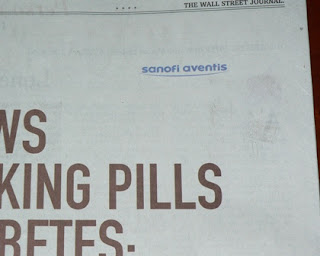The New York Times yesterday ran a fascinating story about how banks, insurers and doctors are now extending loans to people for various healthcare-related issues. You can read the full article
here (registration required). To quote an excerpt:
"
Zero-interest financing, a familiar sales incentive at car dealerships and furniture stores, has found its way to another big-ticket consumer market: doctors’ and dentists’ offices. For $3,500 laser eye surgery, $6,000 ceramic tooth implants or other procedures not typically covered by insurance, millions of consumers have arranged financing through more than 100,000 doctors and dentists that offer a year or more of interest-free monthly payments.
Of course, going into debt to pay for medical procedures is nothing new for many people. And this type of financing is still only a fraction of the nation’s $900 billion market for consumer revolving credit.
But as the price of health care continues to rise and big lenders pursue new areas for growth, this type of medical financing has become one of the fastest-growing parts of consumer credit, led by lending giants like Capital One and Citigroup and the CareCredit unit of General Electric.
Big insurers, too, are devising new financing plans with various payback options. Upstart players have also aggressively cut deals with doctors."
As the movie "Sicko" and others have illustrated, besides large number of uninsured people, we Americans also have a significant number of under insured folks. Will this new lending market take off given such large numbers of the un and under insured? What is the next step for the Wall Street lenders in this? Securitize these loans like mortgages, auto loans and credit card debt and sell them off as CDOs to investors worldwide? Start selling credit default swaps on these :-)?
If this market were to grow, much of that growth would have to come from the subprime sector (the more wealthy are well insured and/or don't need the loans). In the event of rising defaults, it will be fun to watch say a bunch of Australian hedge funds trying to foreclose on a bunch of dental crowns in New Jersey!
As the NYT reports, banks, insurance companies and doctors are getting into the lending act. May be big pharma (which is sitting on buckets of money) too? Perhaps big pharma can extend its "patient assistance" programs to include loans. If your insurance company won't reimburse that $10,000 a year drug, big pharma can lend you the money if you are above a certain income level and don't qualify for their assistance. I'm kidding........but the way big pharma has invested its money lately, may be this is better for both patients and big pharma investors. I'm
hoping that this "phoni patient assistance program" will be the subject of a future post on
PharmaGiles.
And finally what happens when these loans go bad? Will there be a federal bail out? Boy that would be one convoluted way to expand govt subsidized health care!
 Pharmalyst just came off the campus recruiting season and this explains the lack of any posts prior to this one in November.
Pharmalyst just came off the campus recruiting season and this explains the lack of any posts prior to this one in November. 

































